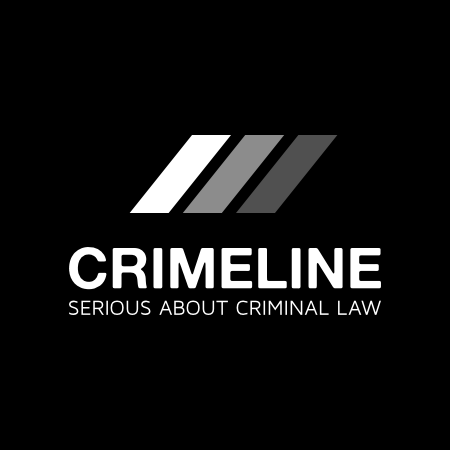Legislation – Crime and Courts Act 2013
Changes to legislation:
There are currently no known outstanding effects for the Crime and Courts Act 2013, Section 56.![]()
Changes to Legislation
Revised legislation carried on this site may not be fully up to date. At the current time any known changes or effects made by subsequent legislation have been applied to the text of the legislation you are viewing by the editorial team. Please see ‘Frequently Asked Questions’ for details regarding the timescales for which new effects are identified and recorded on this site.
Part 3Miscellaneous and general
Drugs and driving
56Drugs and driving
(1)
“5ADriving or being in charge of a motor vehicle with concentration of specified controlled drug above specified limit
(1)
This section applies where a person (“D”)—
(a)
drives or attempts to drive a motor vehicle on a road or other public place, or
(b)
is in charge of a motor vehicle on a road or other public place,
and there is in D’s body a specified controlled drug.
(2)
D is guilty of an offence if the proportion of the drug in D’s blood or urine exceeds the specified limit for that drug.
(3)
It is a defence for a person (“D”) charged with an offence under this section to show that—
(a)
the specified controlled drug had been prescribed or supplied to D for medical or dental purposes,
(b)
D took the drug in accordance with any directions given by the person by whom the drug was prescribed or supplied, and with any accompanying instructions (so far as consistent with any such directions) given by the manufacturer or distributor of the drug, and
(c)
D’s possession of the drug immediately before taking it was not unlawful under section 5(1) of the Misuse of Drugs Act 1971 (restriction of possession of controlled drugs) because of an exemption in regulations made under section 7 of that Act (authorisation of activities otherwise unlawful under foregoing provisions).
(4)
The defence in subsection (3) is not available if D’s actions were—
(a)
contrary to any advice, given by the person by whom the drug was prescribed or supplied, about the amount of time that should elapse between taking the drug and driving a motor vehicle, or
(b)
contrary to any accompanying instructions about that matter (so far as consistent with any such advice) given by the manufacturer or distributor of the drug.
(5)
If evidence is adduced that is sufficient to raise an issue with respect to the defence in subsection (3), the court must assume that the defence is satisfied unless the prosecution proves beyond reasonable doubt that it is not.
(6)
It is a defence for a person (“D”) charged with an offence by virtue of subsection (1)(b) to prove that at the time D is alleged to have committed the offence the circumstances were such that there was no likelihood of D driving the vehicle whilst the proportion of the specified controlled drug in D’s blood or urine remained likely to exceed the specified limit for that drug.
(7)
The court may, in determining whether there was such a likelihood, disregard any injury to D and any damage to the vehicle.
(8)
In this section, and in sections 3A, 6C(1), 6D and 10, “specified” means specified in regulations made—
(a)
by the Secretary of State, in relation to driving or attempting to drive, or being in charge of a vehicle, in England and Wales;
(b)
by the Scottish Ministers, in relation to driving or attempting to drive, or being in charge of a vehicle, in Scotland.
(9)
A limit specified under subsection (2) may be zero.”
(2)
In section 11 of the 1988 Act (interpretation of sections 3A to 10), in subsection (2)—
(a)
““controlled drug” has the meaning given by section 2 of the Misuse of Drugs Act 1971,”;
(b)
““specified”, in relation to a controlled drug, has the meaning given by section 5A(8)”.
(3)
In section 195 of the 1988 Act (provisions as to regulations), in subsection (3), and in subsections (4) and (4A) (regulations subject to affirmative resolution procedure), before “8(3)” insert “
.
5A,
”
(4)
“RTA section 5A(1)(a) and (2)
Driving or attempting to drive with concentration of specified controlled drug above specified limit.
Summarily.
On conviction in England and Wales: 51 weeks or level 5 on the standard scale or both. On conviction in Scotland: 6 months or level 5 on the standard scale or both.
Obligatory.
Obligatory.
3-11
RTA section 5A(1)(b) and (2)
Being in charge of a motor vehicle with concen-tration of specified controlled drug above specified limit.
Summarily.
On conviction in England and Wales: 51 weeks or level 4 on the standard scale or both. On conviction in Scotland: 3 months or level 4 on the standard scale or both.
Discretionary.
Obligatory.
10”.
(5)
In the entry inserted by subsection (4) beginning “RTA section 5A(1)(a) and (2)”, in relation to an offence committed before the commencement of section 281(5) of the Criminal Justice Act 2003 the reference to 51 weeks (on conviction in England and Wales) is to be read as a reference to 6 months.
(6)
In the entry inserted by subsection (4) beginning “RTA section 5A(1)(b) and (2)”, in relation to an offence committed before the commencement of section 280(2) of the Criminal Justice Act 2003 the reference to 51 weeks (on conviction in England and Wales) is to be read as a reference to 3 months.
(7)
Schedule 22 (drugs and driving: minor and consequential amendments) has effect.
